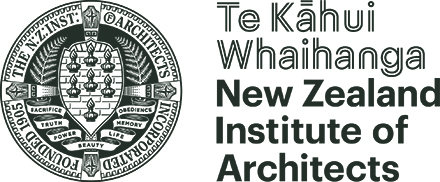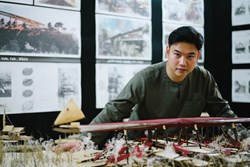A Maori Land Court, monastery building and Hawke's Bay Opera
House are among projects celebrated in the 2009 Gisborne Hawke's
Bay Architecture Awards.
The programme is organised and run by the New Zealand Institute of
Architects and supported by Resene.
Jury convenor Robin Larkworthy said there had been a wide variety
of entries of a very high standard.
The new offices and court room for the Maori Land Court in
Gisborne, which replaces a previous smaller court room, was praised
by Mr Larkworthy for its "functional, inviting and spiritually
uplifting" atmosphere.
Nicoll Blackburne Architects worked closely with local iwi and the
Department of Justice on the design, a winner in the public
architecture category.
Every element was rigorously considered with allusions to marae
forms and Maori culture reinforcing the significance of the
court.
Double honours for Elephant Hill
The "fine and beautifully detailed" Elephant Hill Estate and
Winery overlooking Cape Kidnappers was a winner in the commercial
architecture category while its lodge took honours in residential
architecture. Both were designed by Blair & Co.
Jurors praised the combination of contemporary European design
approach and Kiwi flavour with the building's weathered copper clad
exterior and strong lines expressing the surrounding ocean and rows
of vines.
Te Mata House
A rural Te Mata house by Stevens Lawson Architects captivated
the jury with "exquisite crafting".
"It is just beautifully put together and its owners absolutely
adore it," said Mr Larkworthy. "It sits perfectly within the
landscape with wonderfully framed views from every room."
The Kopua Guest House at the Benedictine-Cistercian Southern Star
Abbey at Takapau, by Tennent + Brown Architects, the first part of
a major programme planned for the abbey, was a winner in public
architecture.
Mr Larkworthy said the "calm environment for spiritual healing and
contemplation," perfectly met the brief for a building that was
about light and form rather than ornamentation.
The restoration of Hawke's Bay Opera House and the development of
a new multi-functional space, both by Shand Shelton, took honours
respectively in heritage and public architecture. The jury hailed
the building as "now a polished jewel in the cultural and artistic
crown of Hastings". The judges also noted the innovative use of
theatre technology and fabric roof engineering that can transform
the plaza from enclosed space into an open-air venue.
Restored chapel
The restoration of St George's Chapel at Crownethorpe by Graham
Linwood Architects was also a heritage winner, praised as a
committed and sensitive approach to "an important building that
embodies the collective memory of a community, region and
country".
The 1921 chapel was built by landowner James Coleman in memory of
his son who died in service in WWI. The family farm was also used
to resettle returned servicemen, many of whom are buried with some
of their descendants in the chapel's cemetery.
Public architecture winners
Other public architecture winners included the Gisborne Police
Station by Opus Architecture which preserved two facades and the
heritage character of an existing historic building while adding a
new third storey.
The Ngata Memorial College - New Senior School at Ruatoria by
Nicoll Blackburne Architects captured the jury's attention with the
"building language of the marae", flexibility and generous sense of
space.
Hotels and café
Commercial architecture winners included an extension to the
beachfront Crown Hotel Studios and Restaurant at Ahuriri by Opus
Architecture, the new Quest Napier hotel by Perry Architects and
the Munroe Street Frontage upgrade in Napier by Judd Dougan Team
Architecture.
The Milk & Honey Café and Restaurant in Napier, by Clarkson
Architects, was the sole winner in interior architecture.
Residential
Residential winners also included the rural McHardy House
between Napier and Hastings by Clarkson Architects, described as a
"finely handled example of a house with a Hawke's Bay feel".
The beachfront Gillies House in Napier by Wilson Jack Architects
impressed the jury with clever angles that "catch the sun and views
of Napier and Hawke's Bay".
TL One, a property overlooking Trinity Hill Winery, by Hillery
Priest Architects, echoes pioneering bush huts, with robust
exterior materials such as a zinc ribbed chimney and finely-handled
interior details including walls lined in Tasmanian ash.
Additions to and refurbishment of a Poraiti country residence by
Judd Dougan Team Architecture was admired as a "bold design
solution" and the refurbishment of the 1950s Watson Hasselman House
on Napier Hill by Opus Architecture, as "careful and
respectful".
Jurors
Mr Larkworthy was joined on the jury by fellow architect Neil
Fenwick and freelance journalist Mary Shanahan.
As well as visiting all shortlisted properties, the judges met
with the architects and clients. The buildings were judged against
a series of key criteria including their contribution to the
advancement of architecture as a discipline and enhancement of the
human spirit.



